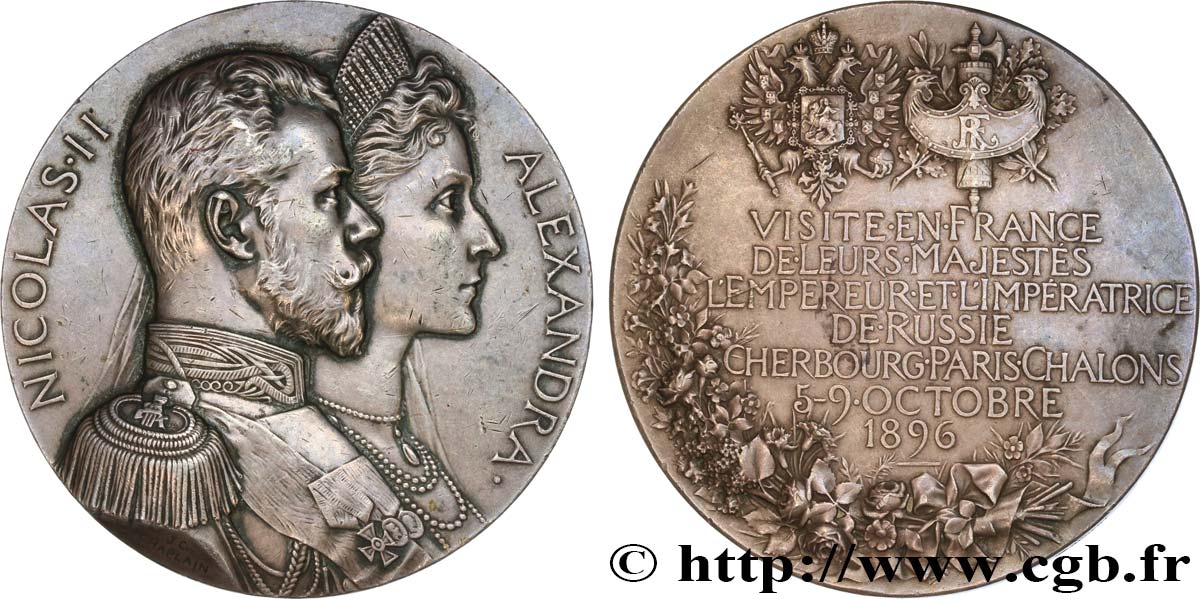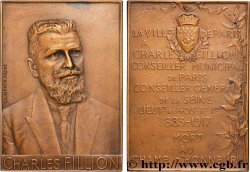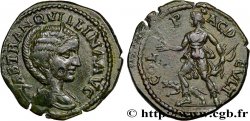Live auction - fme_460463 - III REPUBLIC Médaille de visite du tsar Nicolas II
You must signin and be an approved bidder to bid, LOGIN TO BID. Accounts are subject to approval and the approval process takes place within 48 hours. Do not wait until the day a sale closes to register. Clicking on "BID" constitutes acceptance of the terms of use of cgb.fr private live auctions.
Bids must be placed in whole Euro amounts only. The sale will start closing at the time stated on the item description; any bids received at the site after the closing time will not be executed. Transmission times may vary and bids could be rejected if you wait until the last second. For further information check the Live auction FAQ
All winning bids are subject to a 18% buyer’s fee.
All winning bids are subject to a 18% buyer’s fee.
| Estimate : | 1 200 € |
| Price : | 670 € |
| Maximum bid : | 670 € |
| End of the sale : | 06 March 2018 18:29:52 |
| bidders : | 2 bidders |
Type : Médaille de visite du tsar Nicolas II
Date: 1896
Mint name / Town : France et Russie
Metal : silver
Diameter : 70 mm
Orientation dies : 12 h.
Engraver CHAPLAIN Jules-Clément (1839-1909)
Weight : 167,8 g.
Edge : lisse + corne ARGENT
Rarity : R2
Coments on the condition:
Médaille avec une patine de collection ancienne, assez homogène au revers mais avec des traces de manipulation au droit avec un probable nettoyage ancien
Obverse
Obverse legend : NICOLAS. II - ALEXANDRA..
Obverse description : Bustes accolés de Nicolas II et d’Alexandra à droite.
Reverse
Reverse legend : VISITE. EN. FRANCE / DE. LEURS. MAJESTÉS / L'EMPEREUR. ET. L'IMPÉRATRICE / DE RUSSIE / CHERBOURG. PARIS. CHALONS / 5-9 OCTOBRE / 1896.
Reverse description : Légende en sept lignes au-dessus d’une gerbe de fleurs ; au-dessus, les armes de Russie et de la République française.
Commentary
Cette fameuse médaille est signalée en or, en argent et en bronze, mais existe aussi en bronze argenté. Les exemplaires en or sont extraordinairement rares et ceux en argent passent de temps en temps sur le marché.
En 1896, le jeune empereur Nicolas II et son épouse l'impératrice Alexandra firent un voyage officiel en France qui eut un grand retentissement dans tout le pays. La Russie était la seule alliée de la France dont toute l'Europe se méfiait. À cette occasion Nicolas II posa la première pierre du pont Alexandre-III, nommé en l'honneur de son père et pour symboliser l'amitié franco-russe. Le pont sera inauguré quatre ans plus tard par le président Émile Loubet, pour l'Exposition universelle de Paris de 1900..
En 1896, le jeune empereur Nicolas II et son épouse l'impératrice Alexandra firent un voyage officiel en France qui eut un grand retentissement dans tout le pays. La Russie était la seule alliée de la France dont toute l'Europe se méfiait. À cette occasion Nicolas II posa la première pierre du pont Alexandre-III, nommé en l'honneur de son père et pour symboliser l'amitié franco-russe. Le pont sera inauguré quatre ans plus tard par le président Émile Loubet, pour l'Exposition universelle de Paris de 1900..








 Report a mistake
Report a mistake Print the page
Print the page Share my selection
Share my selection Ask a question
Ask a question Consign / sell
Consign / sell
 Full data
Full data















